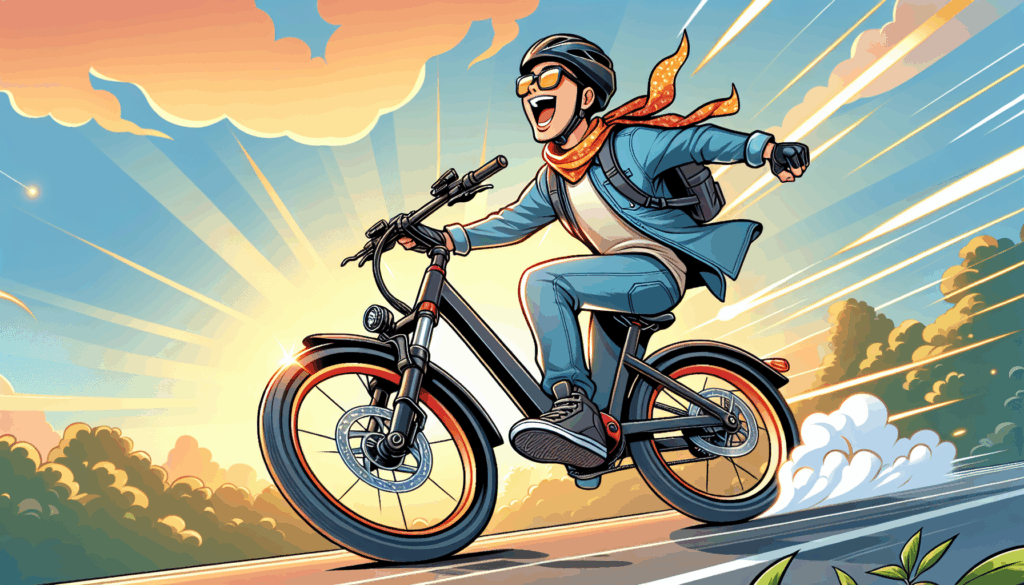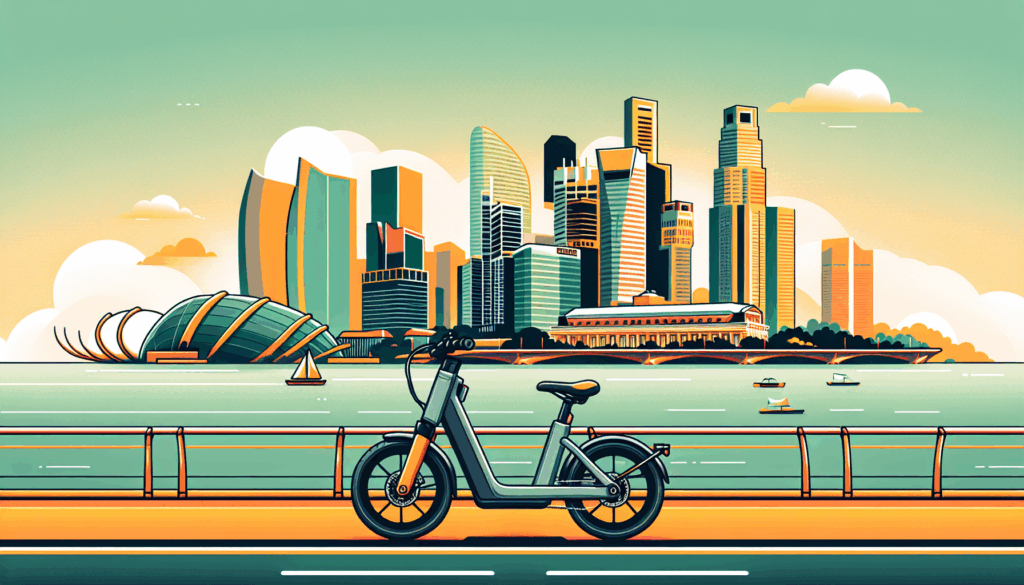
The rise of electric bikes, or ebikes, has transformed urban mobility, offering an eco-friendly and efficient alternative to traditional transportation. In Southeast Asia, two countries have emerged as frontrunners in the electric bike scene: Malaysia and Singapore. While both nations are embracing this trend, there are stark differences in the types of electric bikes available and the regulatory frameworks that shape their use.
In Malaysia, a diverse range of electric bikes caters to various terrains and needs, whereas Singapore’s Land Transport Authority (LTA) imposes strict regulations that significantly influence the design and functionality of electric bikes on its roads. Understanding these distinctions not only highlights the unique electric bike cultures of each country but also uncovers the impact of local policies on the thriving ebike community.
Overview of Ebike Regulations in Malaysia and Singapore
In Malaysia, the regulations surrounding electric bikes, or ebikes, are gradually evolving to accommodate the growing market. Malaysia encourages the use of ebikes as a sustainable transportation option, with relatively lenient regulations compared to its neighbor Singapore. Riders are generally required to adhere to basic safety requirements, such as wearing helmets, but there are fewer stringent rules governing the specifications of the electric bikes themselves. This has resulted in a diverse range of electric bike models flooding the market, with many riders opting for more powerful and faster bikes that may not meet safety standards in other countries.
Overall, Malaysians are embracing electric bikes as a convenient and eco-friendly alternative for urban commuting, leading to a vibrant and varied electric bike scene.
In stark contrast, Singapore’s Land Transport Authority (LTA) enforces strict regulations on electric bikes to ensure rider safety and public welfare. The LTA mandates that only certain types of electric bikes, specifically those that meet power and speed limits, are allowed on public roads. These regulatory measures have cultivated a safer environment for riders but have also limited the variety of electric bikes available. Consequently, the electric bike scene in Singapore is primarily dominated by models that comply with LTA guidelines, leading to a less diverse market compared to Malaysia. The differences in regulatory frameworks significantly shape the electric bike culture and usage patterns in each country, highlighting the varying approaches to sustainable transportation.
Popular Ebike Models in Malaysia
In contrast, the ebike scene in Singapore is significantly impacted by stringent regulations enforced by the Land Transport Authority (LTA). This has led to the popularity of lighter, more compact electric bike models that comply with local laws regarding speed and power output. Brands such as Beryl and XPulse dominate the market, offering slim designs that prioritize safety and compliance over off-road capabilities. Additionally, Singaporean consumers often prefer models with smart technology integration for enhanced user experience, given the city’s advanced infrastructure. Overall, while Malaysia embraces a diverse range of electric bikes for various terrains, Singapore’s regulations shape a more uniform selection focused on urban commuting and conformity with regulatory standards.
Popular Ebike Models in Singapore
In Singapore, the popularity of ebikes has surged, primarily due to the efficient regulatory framework established by the Land Transport Authority (LTA). The LTA has implemented strict guidelines on the types of electric bikes allowed on the roads, promoting models that are lightweight, have a maximum speed of 25 km/h, and come equipped with certain safety features. Popular ebike models such as the Shimano STEPS series and the Gocycle G4 have gained traction among urban commuters. These models are designed to cater to the unique cycling environment in Singapore, emphasizing portability and compliance with local regulations, ensuring riders have a pleasant and safe riding experience in a densely populated area.
Furthermore, Singapore’s electric bike market leans towards brands that prioritize eco-friendliness and high-tech features, appealing to environmentally conscious consumers. It’s clear that the impact of LTA regulations molds the types of ebikes that thrive in this city-state.
In contrast, Malaysia’s electric bike scene presents a broader array of options due to a more relaxed regulatory environment. Malaysian consumers can find a wide selection, ranging from budget-friendly models to high-end performance bikes. Brands like MBI and Fliike offer diverse functionalities, catering to various riding preferences and terrains. The lack of stringent speed and power regulations means that riders in Malaysia have access to powerful models that can handle rugged roads, unlike their counterparts in Singapore whose options are somewhat limited. This divergence not only reflects differing consumer needs but also highlights how government policies shape the electric bike landscape in both nations.
As Malaysia continues to grow its ebike market, it remains to be seen how such differences will influence consumer adoption in the long run.
Impact of LTA Regulations on Ebike Usage in Singapore
In Singapore, the Land Transport Authority (LTA) has implemented strict regulations that significantly shape the ebike landscape. These regulations are aimed at ensuring the safety of both riders and pedestrians, as Singapore has a high density of urban areas where ebikes navigate alongside foot traffic and other vehicles. For instance, the use of certain high-speed electric bikes is restricted, and riders must adhere to power limits and speed limits set by the LTA.
Additionally, riders are required to wear helmets, and ebikes must display a compliance label, which emphasizes the government’s focus on safety and compliance in an increasingly crowded urban environment. This regulatory environment has created challenges for electric bike enthusiasts seeking to enjoy their rides freely, but it also promotes a culture of responsible riding among users.
In contrast, Malaysia has a less regulated ebike scene, allowing for a wider variety of ebike options and faster development in terms of technology and design. With a more relaxed regulatory framework, riders in Malaysia have the freedom to choose from a broader selection of electric bikes, including those with higher speeds and power. However, this can lead to safety concerns, as the absence of regulation means that some riders may not follow best practices for safety. Ultimately, while LTA regulations in Singapore enforce a structured and safe electric bike usage, the Malaysian market enjoys a more lenient environment that fosters innovation but raises potential risks.

Consumer Preferences: Malaysia vs Singapore
When it comes to consumer preferences, the ebike market in Malaysia and Singapore displays contrasting dynamics influenced by geographical, economic, and regulatory factors. In Malaysia, electric bikes are often embraced for their affordability and versatility, catering to a wide demographic that values practicality for daily commutes or recreational use. With a range of models available, from budget-friendly options to high-end electric bicycles, consumers in Malaysia tend to prioritize features like battery longevity and durability over brand reputation. The local market’s attraction is further heightened by the relatively lower cost of living, making the purchase of an electric bike an appealing option for many Malaysians seeking an alternative to traditional transportation methods.
In contrast, Singapore’s electric bike scene is heavily shaped by regulatory policies enforced by the Land Transport Authority (LTA). The stringent guidelines around electric bike specifications, including weight limits and speed caps, influence consumer preferences towards specific models that comply with safety standards. As a result, the market in Singapore leans more towards high-quality, feature-rich electric bikes that align with these regulations. Moreover, consumers in Singapore tend to value streamlined designs and smart technology integration, reflecting a more urban-centric lifestyle where functionality, style, and compliance converge in their choice of transportation.
As such, the electric bike landscape in Singapore emphasizes premium offerings compared to Malaysia’s broader range of options, demonstrating how longstanding regulations can shape consumer behavior in distinctly different ways.
Price Comparison of Ebikes in Both Markets
When it comes to the price of ebikes, Malaysia tends to offer a more diverse range of options compared to Singapore. In Malaysia, the local market benefits from lower manufacturing and import taxes, leading to more affordable models that appeal to budget-conscious consumers. Prices for basic ebikes can start as low as RM1,000, making them accessible to a wider audience.
On the other hand, Singapore’s stringent regulations enforced by the Land Transport Authority (LTA) mean that many electric bikes must comply with specific safety and performance standards. This often translates into higher costs, with models frequently starting around SGD1,500, as buyers are limited to certified vendors that guarantee compliance with the regulations. The price variances largely reflect the balance of safety regulations and market demand in each country, impacting purchasing decisions.
Additionally, the higher costs in Singapore often correlate with the availability of more advanced technology and features, which may justify the investment for some cyclists. The fluctuating exchange rates and economic conditions also play a role in pricing dynamics between the two markets. While Malaysian consumers enjoy a broader range of affordable options, Singaporean buyers may argue for the longevity and reliability of their choices, given the regulatory framework. Whether you are a casual rider or an enthusiast, the understanding of ebike pricing across Malaysia and Singapore is crucial for making an informed purchase decision.
Challenges Faced by Ebike Riders in Malaysia and Singapore
Ebikes in Malaysia and Singapore face unique challenges that greatly affect their adoption and usage. In Malaysia, riders often contend with inadequate infrastructure, such as a lack of dedicated bike lanes and poor road conditions. Additionally, the legal framework surrounding ebikes can be vague, leading to confusion about where and how they can be used legally. Riders frequently encounter a lack of awareness about the benefits of ebikes, which can inhibit community acceptance and growth of this alternative transport option. Furthermore, the diverse terrain in Malaysia presents obstacles, especially in rural regions where uneven roads may deter potential ebike users from making the switch from traditional vehicles.
In contrast, Singapore’s ebike scene is heavily influenced by the Land Transport Authority (LTA) regulations, which have shaped a more structured environment for ebike riders. The LTA has implemented strict rules on ebike models and usage, mandating safety features and requiring licenses for certain types of ebikes. While these regulations have contributed to safer riding conditions, they can also limit the variety of ebikes available to consumers compared to Malaysia. The strict enforcement of rules can potentially deter some riders, who may feel overwhelmed by compliance requirements. As such, while both countries face challenges regarding ebike adoption, the specific concerns vary significantly due to their respective infrastructure and regulatory landscape.
Future Trends in the Ebike Industry in Malaysia and Singapore
The future trends in the ebike industry in Malaysia and Singapore are poised to diverge significantly, influenced by distinct regulatory frameworks and consumer preferences. In Malaysia, the ebike market is growing rapidly, with advancements in technology and affordability fostering greater adoption among consumers. The government’s initiatives to promote sustainable transportation and enhance cycling infrastructure are also encouraging more people to consider ebikes as a viable mode of transport. As manufacturers become more innovative, we can expect to see a variety of models catering to different needs, from urban commuting to recreational riding, leading to an increase in the overall market size and participation.
In contrast, Singapore’s ebike scene is heavily shaped by the Land Transport Authority (LTA) regulations, which impose stricter safety and technical standards on ebikes. This has led to a more limited range of ebikes available in Singapore, with a greater focus on compliance and safety features. Consequently, the ebike industry in Singapore may experience slower growth, as potential users navigate these regulatory hurdles. However, the emphasis on public safety and sustainability could usher in improved technology and smarter designs that cater specifically to urban constraints. Both countries showcase unique trajectories in the ebike landscape, offering valuable insights for enthusiasts and stakeholders alike.

The Future of Ebikes in Malaysia and Singapore
In summary, the ebike landscape in Malaysia and Singapore showcases distinct differences shaped by varying regulations and cultural attitudes. In Malaysia, there is a burgeoning market with a diverse range of ebikes catering to different preferences, from affordable options to high-performance models. On the other hand, Singapore’s growing focus on sustainable transport brings a more regulated and restrictive environment for ebikes, influenced heavily by the Land Transport Authority’s (LTA) policies. These factors posit Malaysia as a melting pot of ebike options while Singapore remains more curated yet challenging for ebike enthusiasts.
As we look forward, both markets have the potential for growth and innovation. With Malaysia embracing the ebike movement at a faster rate, it could become a hub for affordable and versatile electric mobility solutions. Meanwhile, Singapore’s stringent regulations may lead to improvements in safety and infrastructure for e-riders. Ultimately, understanding these discrepancies between Malaysia and Singapore not only highlights the unique ebike brand in each country but also emphasizes how legislation can significantly shape the electric biking experience.

I’ve owned an ebike in Malaysia before, the variety of options available is indeed impressive. However, I did notice some of the cheap ones can be unreliable, wish the article touched upon that.
Good job highlighting the differences in ebike regulations between Malaysia and Singapore, it’s essential for riders to know what to expect. I think this comparison will help inform a more informed ebike buying decision for consumers.
Thank you, Erick Tan, for your kind words! At Eko Life Malaysia, we believe in providing accurate and helpful information to our customers, especially when it comes to ebike regulations and choosing the right ebike for their needs. If you have any more questions or concerns about ebikes or our services, please don’t hesitate to reach out to us at [email protected] or call us at +60 3-7890 3042. We’re here to help.
The blog really did a great job covering the various aspects of ebike scenes in both countries. It’s interesting to see the diverse range of ebikes available in Malaysia and how LTA regulations have impacted the market in Singapore.
Thank you so much, Farah! We’re glad you found the blog informative and insightful. Please note that our team at Eko Life Malaysia is committed to providing Malaysian ebike enthusiasts with the latest and greatest products and services. If you have any further questions or concerns, feel free to reach out to us at [email protected] or call us at +60 3-7890 3042. We’re here to help!
A worthwhile read for anyone looking to buy an ebike in either country. The blog raises important points about the nuances of ebike laws and the pros and cons of different ebike models, and the information is presented in a clear and concise manner.
Hi Adrian, thank you for taking the time to read our blog post about the ebike scenes in Malaysia and Singapore. We’re glad you found it informative and helpful in understanding the ebike laws and nuances in both countries. If you have any more questions or need further assistance, please feel free to contact us at [email protected] or +60 3-7890 3042. We’re always here to help.